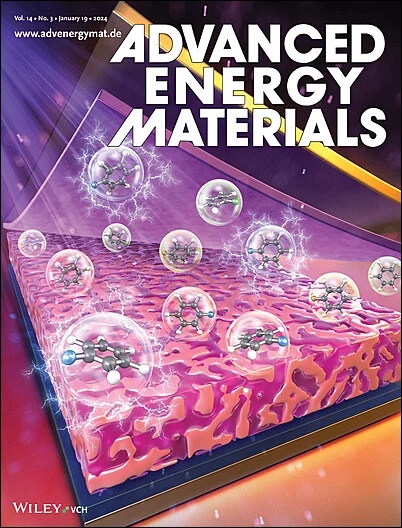通过锂感应静电屏蔽实现高性能Na3V2(PO4)2F3阴极加速Na+动力学
IF 26
1区 材料科学
Q1 CHEMISTRY, PHYSICAL
引用次数: 0
摘要
Na3V2(PO4)2F3结构稳定,电压高,能量密度高,是钠离子电池极具吸引力的阴极材料。然而,它的实际应用受到Na+扩散动力学缓慢和速率能力差的限制,这是由于电子导电性不足、移动Na+与F−之间的强库仑引力以及邻近离子之间的静电排斥。本文获得了Li掺杂的Na2.9Li0.1V2(PO4)2F3来调节Na+扩散通道内的电子环境。理论计算表明,Li掺杂降低了悬垂F−周围的电子密度,并通过静电屏蔽减轻了相邻Na+之间的斥力,促进了Na+的迁移。Li掺杂还破坏了有序的Na+排列,降低了离子迁移的能垒。此外,碳纳米管网络和碳涂层铝箔衬底的集成提高了外部电子导电性,减少了极化。原位电化学阻抗谱和弛豫时间分布技术证实了这些策略降低了钠储存过程中的电荷转移电阻。因此,优化后的电极在半电池中提供了增强的倍率性能(50C时75.27 mAh g - 1)和出色的长期循环稳定性(在10C下,在30000次循环中,每次循环的容量衰减仅为0.0012%),并在全电池的宽温度范围内提供了出色的倍率性能。本文章由计算机程序翻译,如有差异,请以英文原文为准。
Enabling Accelerated Na+ Dynamics Through Li‐Induced Electrostatic Shielding for High‐Performance Na3V2(PO4)2F3 Cathode
Na3 V2 (PO4 )2 F3 is an attractive cathode for sodium‐ion batteries due to its stable structure, high voltage, and impressive energy density. Nonetheless, its practical application is constrained by sluggish Na+ diffusion kinetics and inferior rate capability, stemming from insufficient electronic conductivity, strong Coulombic attraction between mobile Na+ with F− , and electrostatic repulsion among neighboring ions. Herein, Li‐doped Na2.9 Li0.1 V2 (PO4 )2 F3 is obtained to regulate the electronic environment within Na+ diffusion channels. Theoretical calculations indicate that Li doping reduces electron density surrounding pendant F− and mitigates repulsive forces between adjacent Na+ through electrostatic shielding, facilitating Na+ mobility. Li doping also disrupts the ordered Na+ arrangement, lowering the energy barrier for ion migration. Besides, the integration of carbon nanotube network and carbon‐coated aluminum foil substrate enhances external electronic conductivity and reduces polarization. In situ electrochemical impedance spectroscopy and distribution of relaxation times techniques confirm that these strategies lower charge transfer resistance during the sodium storage process. Hence, the optimized electrode delivers enhanced rate capability (75.27 mAh g−1 at 50C) and outstanding long‐term cycling stability (with a capacity decay of only 0.0012% per cycle over 30000 cycles at 10C) in half‐cells and excellent rate performance across wide temperature range in full‐cells.
求助全文
通过发布文献求助,成功后即可免费获取论文全文。
去求助
来源期刊

Advanced Energy Materials
CHEMISTRY, PHYSICAL-ENERGY & FUELS
CiteScore
41.90
自引率
4.00%
发文量
889
审稿时长
1.4 months
期刊介绍:
Established in 2011, Advanced Energy Materials is an international, interdisciplinary, English-language journal that focuses on materials used in energy harvesting, conversion, and storage. It is regarded as a top-quality journal alongside Advanced Materials, Advanced Functional Materials, and Small.
With a 2022 Impact Factor of 27.8, Advanced Energy Materials is considered a prime source for the best energy-related research. The journal covers a wide range of topics in energy-related research, including organic and inorganic photovoltaics, batteries and supercapacitors, fuel cells, hydrogen generation and storage, thermoelectrics, water splitting and photocatalysis, solar fuels and thermosolar power, magnetocalorics, and piezoelectronics.
The readership of Advanced Energy Materials includes materials scientists, chemists, physicists, and engineers in both academia and industry. The journal is indexed in various databases and collections, such as Advanced Technologies & Aerospace Database, FIZ Karlsruhe, INSPEC (IET), Science Citation Index Expanded, Technology Collection, and Web of Science, among others.
 求助内容:
求助内容: 应助结果提醒方式:
应助结果提醒方式:


